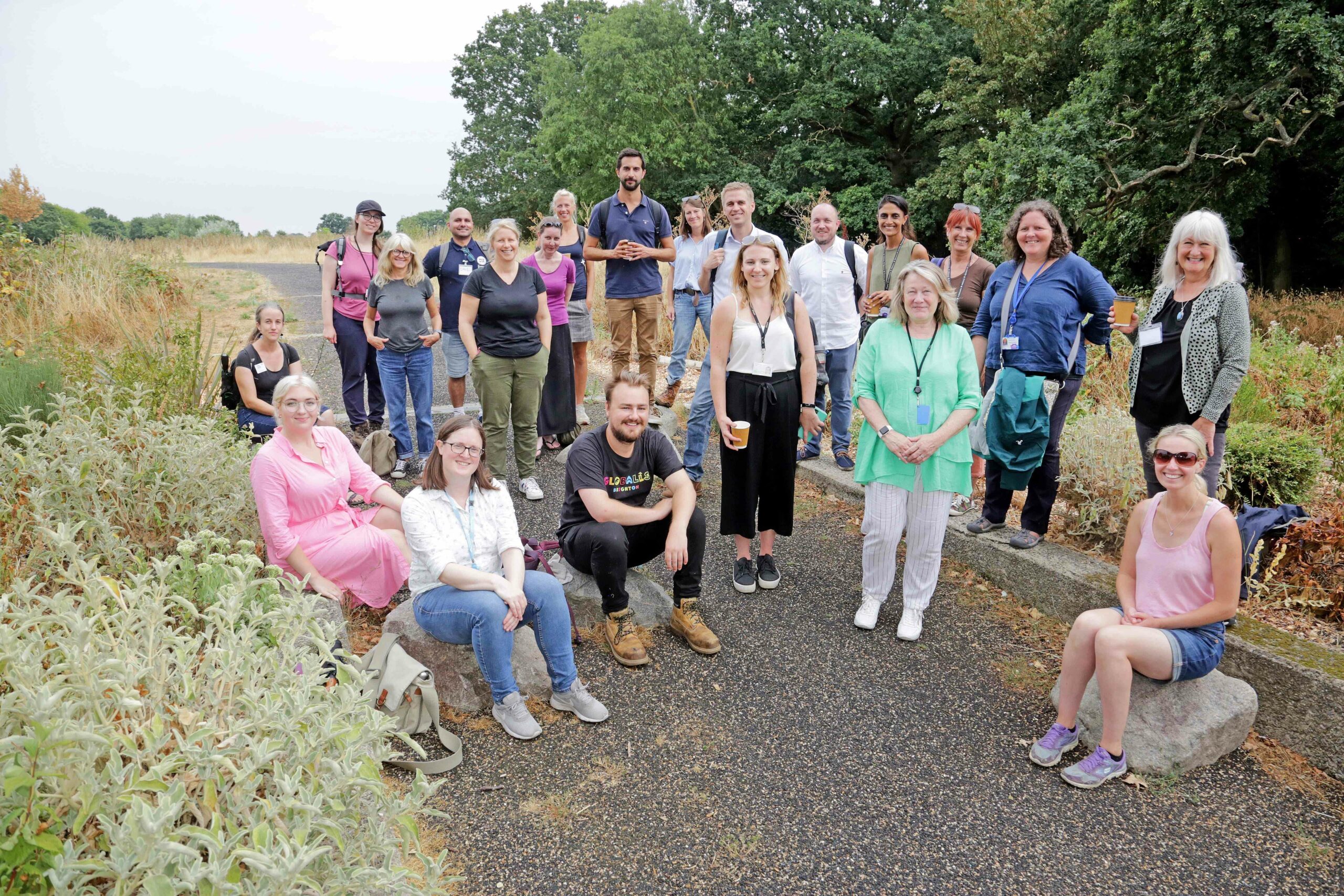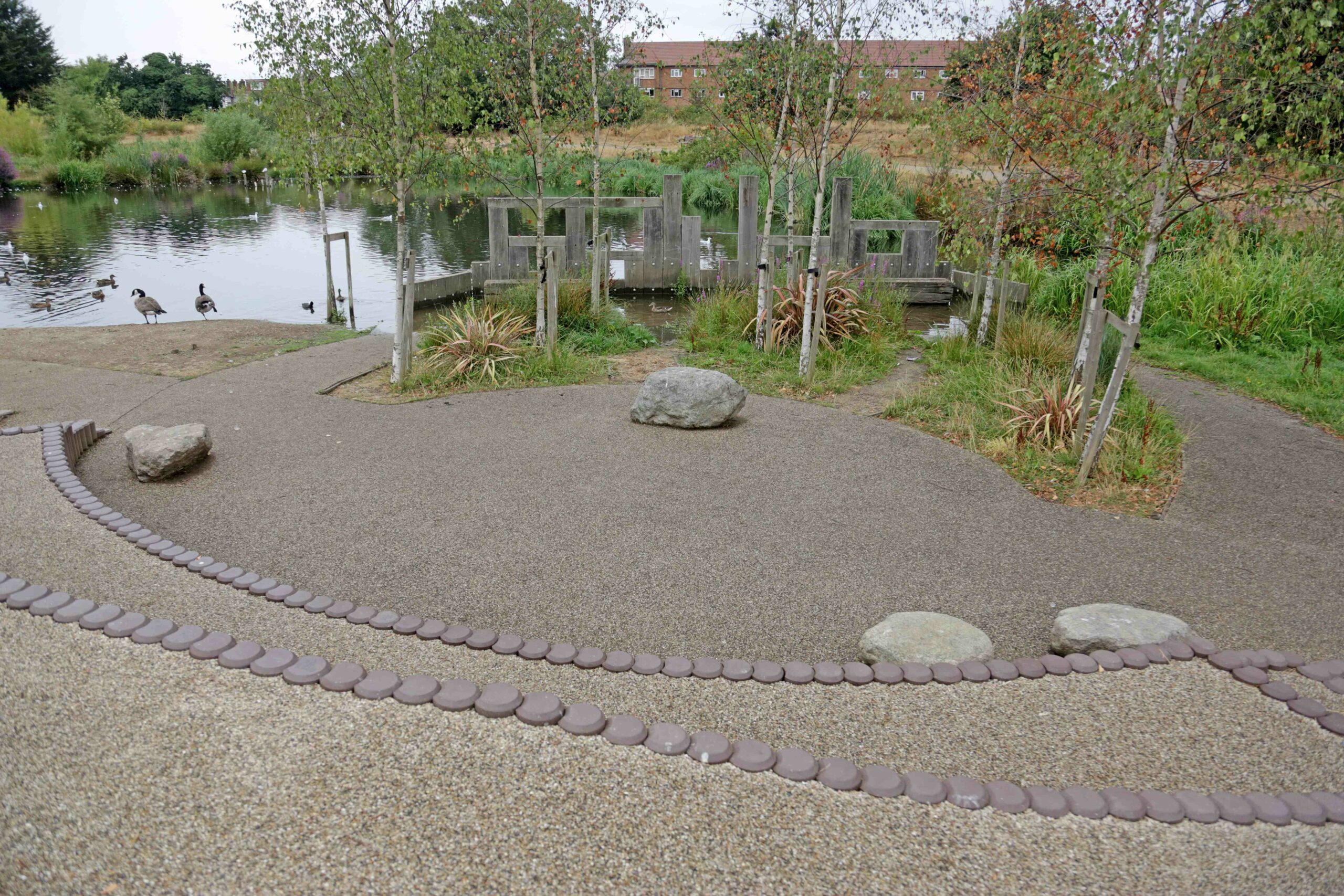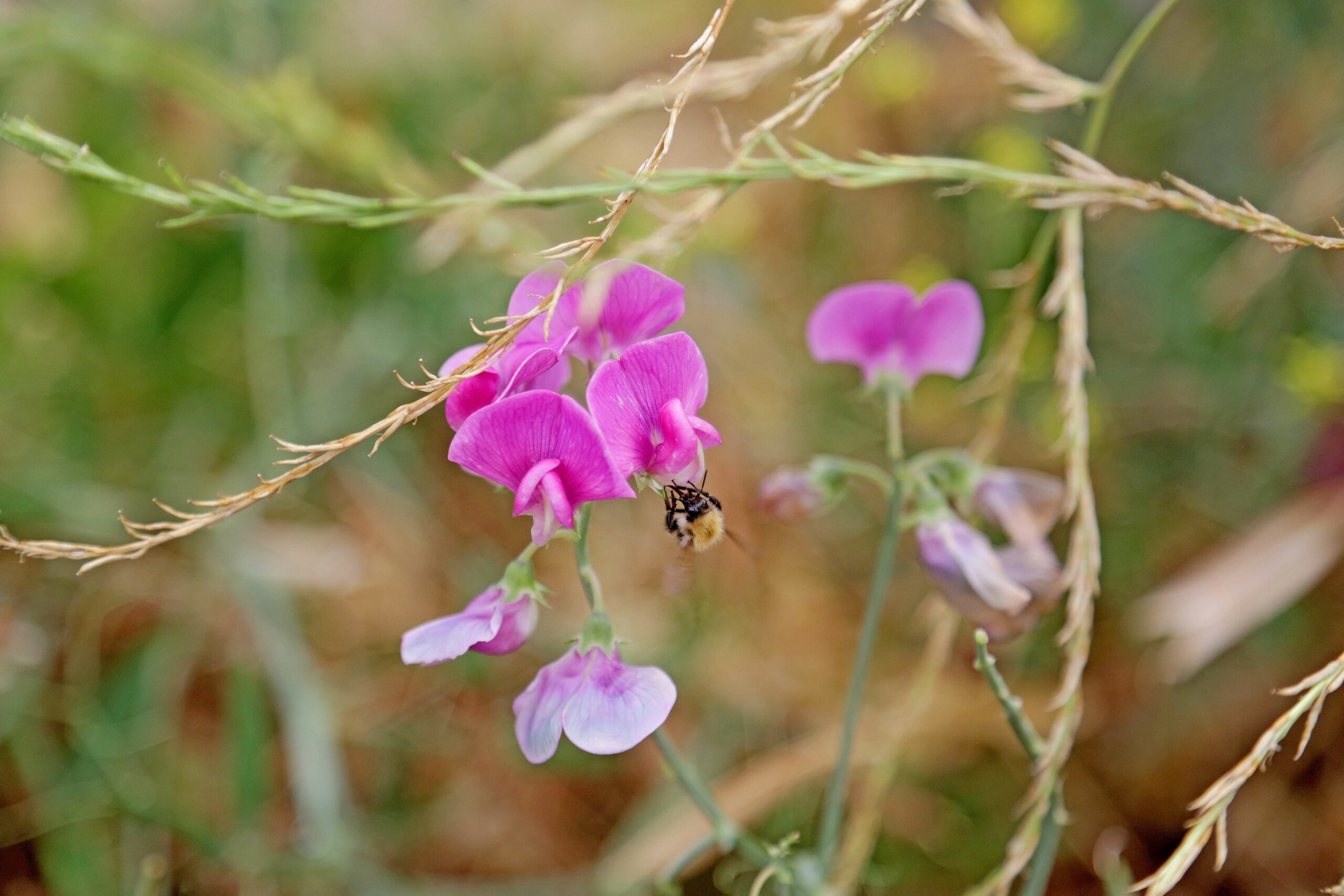
We spent an incredibly inspiring and informative day in Enfield last week with our partners visiting some award-winning SuDS, each using rainwater in extraordinary ways.
A mix of engineers, planners, community representatives, highways, parks, catchment specialists and project managers joined the TAP team to investigate and learn from the Enfield team: to be inspired and motivated to deliver more SuDS in the TAP area.
Sustainable Drainage Systems (SuDS, or rainscapes) are specially designed, engineered and landscaped solutions to manage surface water to reduce flood risk, improve water quality, and provide better biodiversity and community value in the urban environment. They capture water from roofs, roads and car parks, slowing and holding it to reduce the risk of flooding. They help to remove pollutants from road and car park run-off through natural processes including time, sunlight, microbes in the soil and vegetation.
It was particularly appropriate timing for our trip to Enfield. The UK has experienced below average rainfall for months, with parks and verges looking dusty and brown. We wanted to show partners the importance of developing skills and techniques to manage water more sustainably to treat pollution, and to help adapt to climate change: warmer wetter winters, hotter drier summers and more frequent severe weather events such as storms and extreme rainfall.
First, we visited Four Hills Estate, where we met Michael Shorey (Senior Engineer, Watercourses), who showed us around the site, which includes swales, rain gardens and detention basins designed to reduce flood risk. Community benefits for the residents include better accessibility and safer parking.
Four Hills Estate, Blossom Ln, Enfield EN2 0EG
We met Jamie Kukadia (Senior Engineer, Watercourses) who talked to the group about her work, with an overview of Enfield SuDS projects. Jamie and Michael each gave us their top tips for progressing SuDS, including inspirational leadership, passion and persistence to stimulate a change in the management and development of highways and green spaces; joint planning and decision-making between council departments; funding approaches; and the importance of engaging local people early in SuDS proposals.
Jamie walked us through the Pymmes Park Wetlands and Moore Brook Green Link, connecting Pymmes Park to Firs Farm.
The Moore Brook Green Link shows how SuDS can stimulate multiple benefits, including traffic calming, better crossing points and road safety, as well as the ‘four pillars’ of SuDS: reducing flood risk, improving water quality, community value and biodiversity benefits.
2022 SuDS awards for Moore Brook Green Link
Examples of retrofitting SuDS in existing estates, incorporating design around existing utilities and services (often a barrier to implementation) were encouraging, and we noted that much vegetation was thriving despite the drought, showing the importance of designing planting schemes to tolerate wet and dry conditions.
We met Toni Guiver at Firs Farm, a combined wetland and flood management area, filtering and cleaning surface water runoff from a wide catchment, with the ability to store up to 30,000m3 of floodwater during extreme events. Toni is chair of the Friends of Firs Farm, heading an active team caring for the site and leading its continuous improvement.
The site is a haven for people and wildlife, and includes a cycle way, an outdoor classroom, pond dipping and seating. The contrast between the lush wetland area and surrounding parched grass was remarkable. It felt a few degrees cooler, with a noticeable sense of wellbeing.
In the TAP area, we are making progress: The Wild Park Rainscape is planned for 2023, the Carden Avenue SuDS scheme is complete, and these will be complemented by three SuDS in Schools projects, and a community rain garden campaign to raise awareness of sustainable water management for residents.
We are grateful to Toni, Jamie and Michael for sharing their knowledge and expertise. After seeing these SuDS in action, we’re more inspired than ever to bring the benefits to the TAP area.





 Chrome
Chrome
 FireFox
FireFox
 Edge
Edge